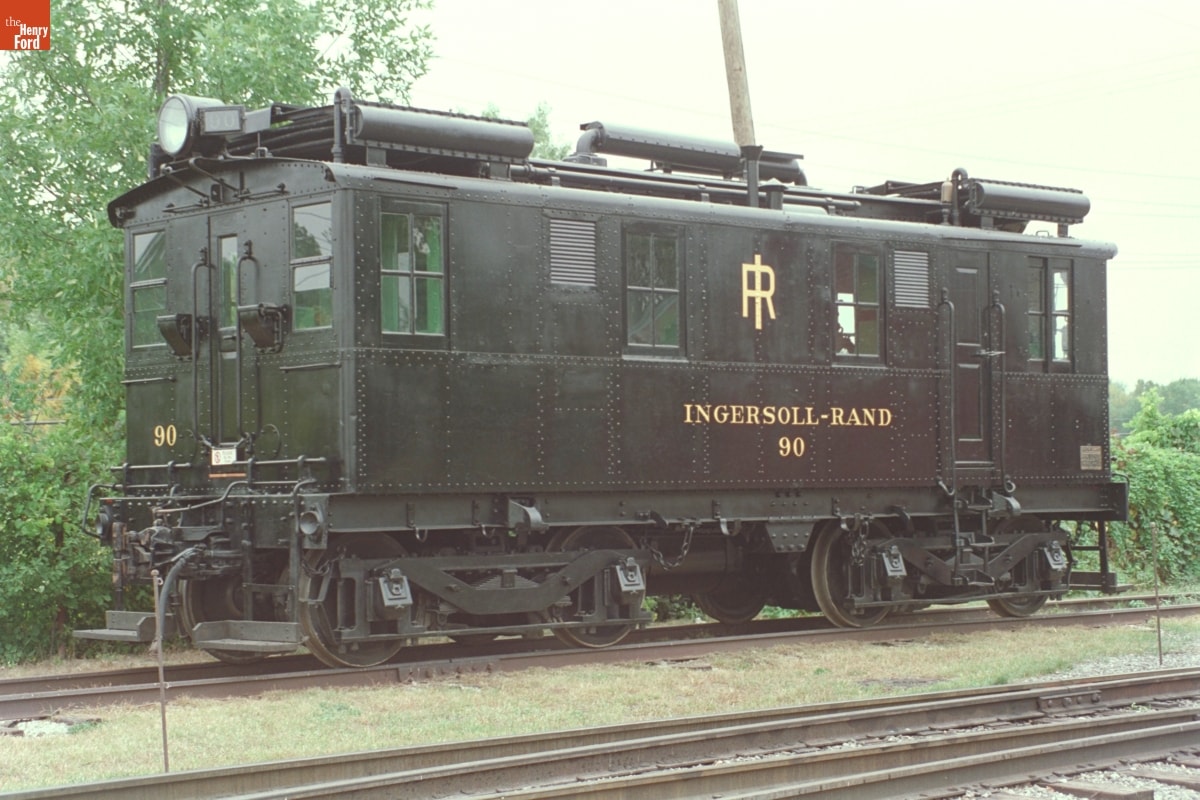Ingersoll-Rand Diesel-Electric Locomotive

Tucked away among the rolling stock and locomotives on display in Henry Ford Museum of American Innovation is an unassuming piece of railroad equipment, modest and apparently devoid of style or character. This little locomotive is one of the most significant items in the collection. It is one of the first locomotives to successfully use internal combustion instead of steam as its power source.
The decline of steam
By the mid-1920s the design and development of steam locomotives had become rigorous and scientific. The dominance of steam, however, was being challenged. Could the internal combustion engine with its higher efficiency, ease of operation, and reliance on cheap fuel become an alternative power source for railroad operations? Smoke abatement rulings in Chicago and New York City provided a further incentive for researching alternatives to steam power.
Success with internal combustion
General Electric's internal combustion engine/railroad interests dated back to 1904. However, by 1920 they had not developed a suitable engine. In late 1923, the Ingersoll-Rand Company successfully developed a locomotive to General Electric's specifications. Over the next 13 months it was tested on 10 different railroad systems. Its success led to a production run of variant engines that ended in 1937 when Ingersoll-Rand withdrew from the locomotive-building field.
Cheaper than steam
The American Locomotive Company supplied the car bodies for these early locomotives. Assembly took place at the General Electric plant in Erie, Pennsylvania. Ingersoll-Rand supplied the engines, building their sales pitch around low operating cost. Number 90, the sixteenth unit built, was delivered in December 1926 and used as a promotional demonstrator, switching in Ingersoll-Rand's Phillipsburg, New Jersey, plant rail yards.

Ingersoll-Rand's Number 90 Diesel-Electric Locomotive, Phillipsburg, New Jersey, probably 1926. THF271020
Efficient design
Number 90's blunt appearance hardly suggests speed or glamour, but compared to steam locomotive switchers its angular outline appears neat and businesslike. The operator's positions -- located at either end -- are clean and tidy, partitioned from the heat of the engine, located in the center of the car. The locomotive's operation is streamlined even if its style is minimal. Subsequent collaborations between industrial designers and railroad companies produced locomotive designs that would further emphasize Number 90's utilitarian appearance.
The job of the switcher
Switchers worked out their years in dirty yards assembling the freight trains that were as much a part of the railroad experience as the fastest overnight express. Number 90 continued in use as a switcher in the Ingersoll-Rand plant until the late 1960s by which time the diesel revolution that it had helped begin had swept steam power aside in the United States.
Maker: General Electric/Ingersoll-Rand/American Locomotive Company
Engine: 6-cylinder diesel
Horsepower: 300 @ 550 rpm.
Displacement: 5655 cu. in.
Generator: 200 kilowatts, 600 volts
Traction motors: 4 @ 95 horsepower each
Weight: 60 tons
Tractive effort: 36,000 lbs.
Speed: 30 mph.
Gift of Ingersoll-Rand Company
Marc Greuther is Chief Curator and Senior Director of Historical Resources at The Henry Ford.
Additional Readings:
- Newcomen Engine, circa 1750
- The Ingersoll-Rand Diesel-Electric Locomotive: Boxy but Significant
- Westinghouse Portable Steam Engine No. 345
- 1927 Plymouth Gasoline-Mechanical Locomotive
New Jersey, railroads, power, Pennsylvania, Henry Ford Museum, by Marc Greuther, 20th century, 1920s


Facebook Comments